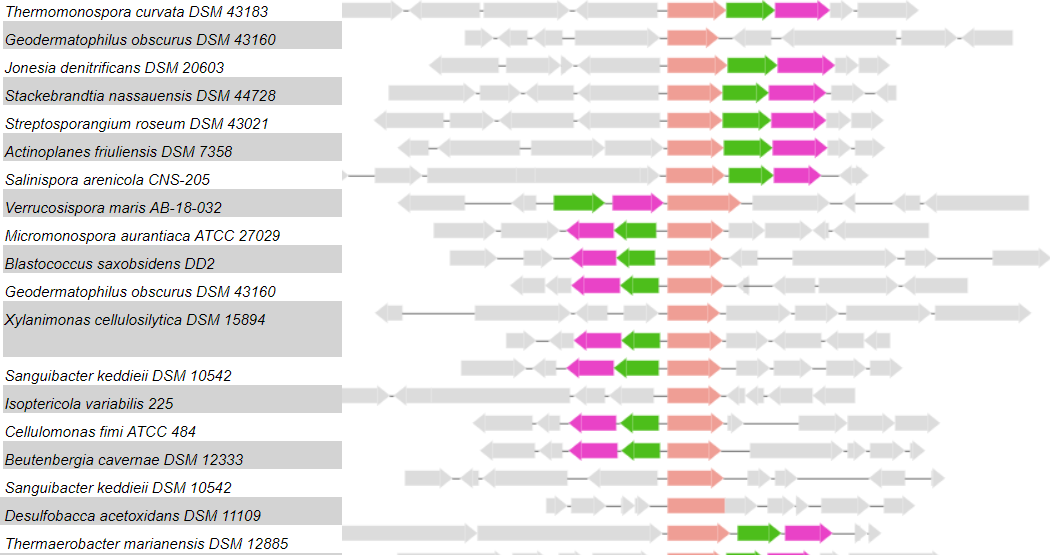|
Home page Term 1 Term 2 Term 3 Term 4 About me Faculty website |
Genomic environment. GO database.COG informationThe protein used in this task is a putative periplasmic iron-binding protein with the ID ANS42615.1.One of the hits of the NCBI Conserved Domain Database search was the COG with an ID COG0803. The interval of the protein included in this COG is 23-314, and the e-value is 4.10e-119. The functional category of the COG is P (inorganic ion transport and metabolism)(in Russian: transport neorganicheskikh ionov i metabolism). This COG actually contains a group of proteins involved in zinc transport (they are ABC-transporters, which can transport various inorganic ions across membranes (including iron)). Genomic environment visualizationA search in COGNAT database gave the following results:  Full search result Search parameters: neighborhood size of 9, occurrence threshold of 20%, and "Net" (not "Da") in the field of taxonomy. As you can see, there are clearly several closely placed COGs that are all involved in zinc transport. It supports the hypothesis that adjacent COGs are functionally related. Association of ANS42615.1 of Serratia plymuthica PRI-2C with GO termsA BLAST search across AmiGO database gave the best hit with a P-value of 5.5e-54, which is undoubtedly a homolog (but not the same protein). This hit is a manganese ABC transporter belonging to Bacillus anthracis str. Ames. The following table lists GO terms associated with the hit.
The next table displays the meaning of the evidence codes used in the previous table (there was only one code there):
Overall, in this practical, for a putative periplasmic iron-binding protein I found a group of orthologous proteins (a COG), which turned out to be involved in zinc transport, and then a search in AmiGO database yielded a manganese ABC transporter as a closest homolog. The conclusion might be that ABC transporters, despite being designed for different metal ions, still remain very similar in terms of their sequence and probably their structure. For the manganese ABC transporter, the GO terms associated with it were found (first table) and their evidence codes analyzed (second table). |
© Stanislav Tikhonov, 2018